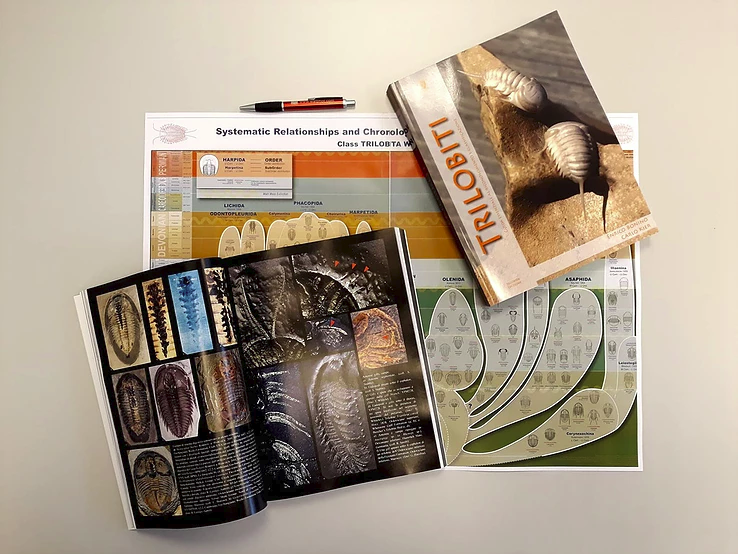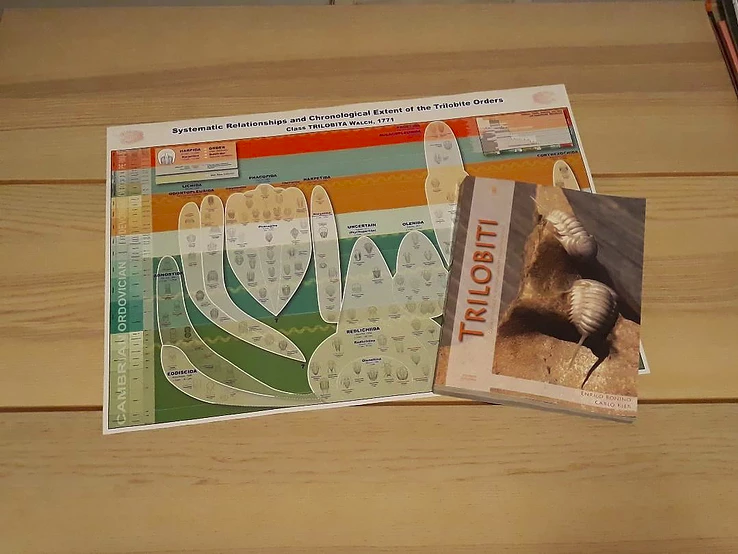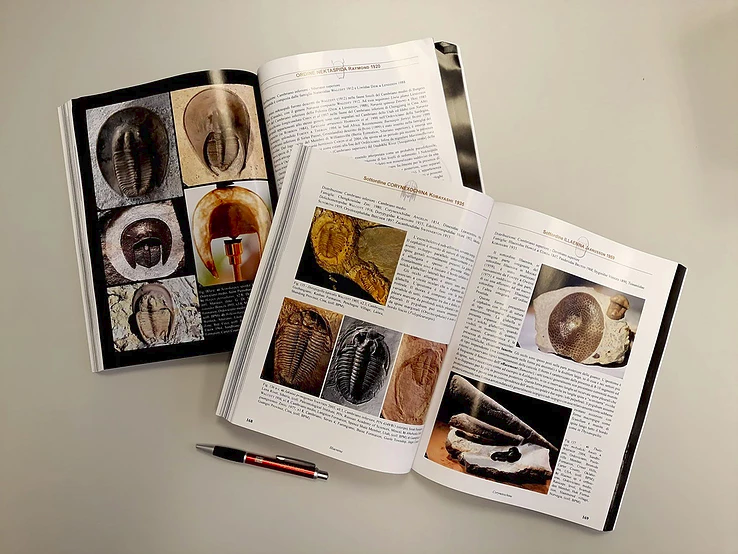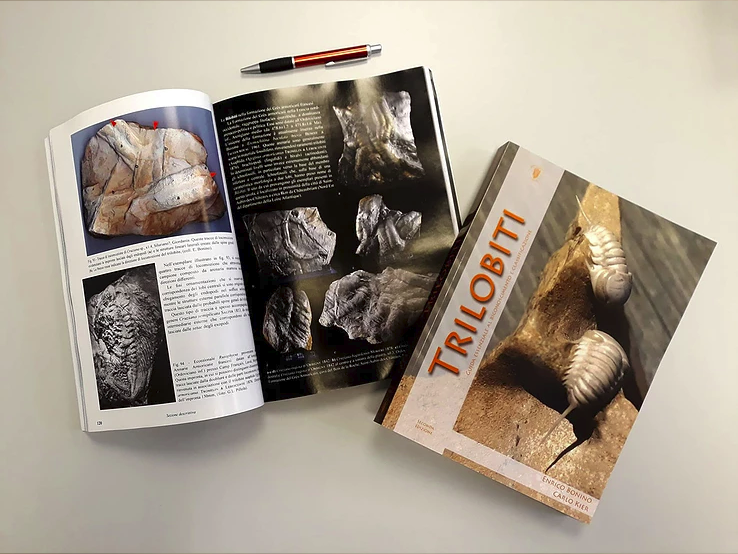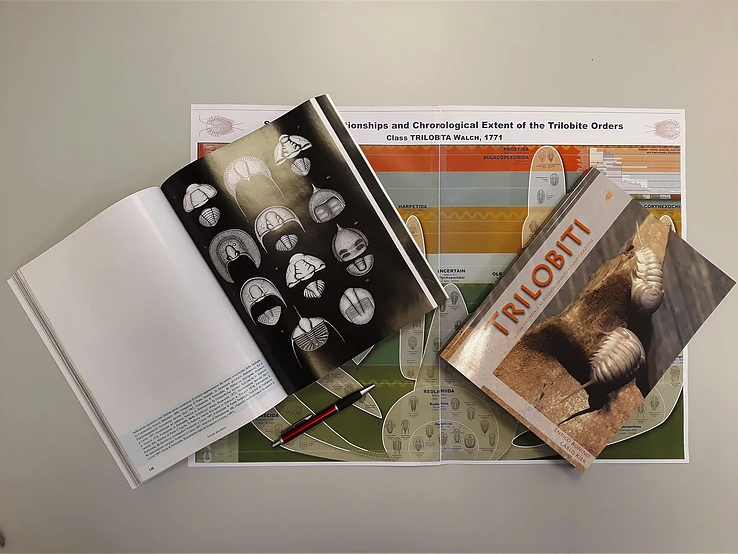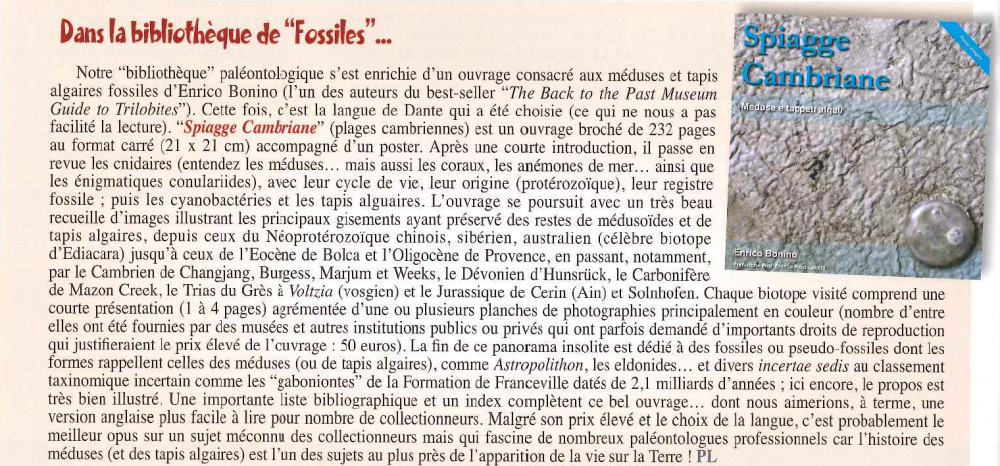Chers tous,
un court texte juste pour vous annoncer que je viens de publier une mise à jour du livre de Trilobite "Back to the Past" en version italienne.... (oui je sais, je vois beaucoup de gens déçus...)
Cette nouvelle version présente plusieurs mises à jour, comme les dernières classifications des ordres (mais sûrement pas les définitives !) suivant Adrain 2011, 2013 et d'autres auteurs, le volume est composée de plus de 480 pages, un poster plié A2 inclus, de nouvelles planches, des images magnifiques à jour et de nouveaux chapitres (ontologie, couleurs, origines...).
N'hésitez pas à demander si quelqu'un est intéressé ; vous pouvez avoir accès à d'autres informations ici : trilobiti_guida_essenziale_al_riconosciento_e_classificazione.pdf ou consultez mon site https://www.enrico-bonino.eu
Ci de suite l'introduction écrite par Sam Gon III:
---------------------------------------------------
Trilobites have been a delightful obsession of mine for many years. As a young graduate student in Zoology over
40 years ago, I gravitated to these amazing Paleozoic arthropods, whose huge diversity and worldwide presence
symbolized the diversification of life on Earth. I remember hunting for and devouring any books that offered significant
focus on the Trilobita. My obsession eventually found virtual expression when in 1999, 20 years ago now (!), I first
unveiled A Guide to the Orders of Trilobites, a website celebrating trilobite diversity and evolution.
That website, still active today, opened international doors for me, introducing me to like-minded trilobitophiles
on all continents, and confirming for me that trilobites were worthy of life-long dedication.
One of these “fellow trilobitophiles” is Enrico Bonino.
So when Enrico announced that he and Carlo Kier were working on a book dedicated to trilobites, it drew my
attention immediately. It was not a primarily technical work, such as the Treatise of Invertebrate Paleontology (Volume
O - the so-called “Trilobite Bible”), and yet neither was it a purely popular account. The authors offer us a substantive
work, exploring the “world of trilobites,” their origins, morphology, classification, ecology, and paleogeography in
extensively researched and richly illustrated sections, then present a large photographic catalogue of trilobites (and
some close relatives) organized in geochronological order and by lagerstätte - one can see trilobites from all over
the world, over 1000 species illustrated - more than adequate to illustrate the richness and distinctiveness of this
singularly wonderful class of ancient arthropods. Even some specimens only very recently discovered (in the first
decades of this new millennium) and published are included, like the giant asaphids from the Valongo Formation of
Portugal, and the belgian Ohleum magreani.
Because new trilobites are discovered every year, and research continues on this fascinating group, the book you
hold now is expanded from the original edition that appeared in 2009: new information on trilobite eggs and ontogeny,
new localities to showcase, even major changes in the classification of trilobites, with new Orders to consider.
This book illustrates how dynamic and fresh the study of trilobites remains in the 21st century.
A work such as this could not have come into being without the cooperation of a large, international community
of collectors, preparators, researchers, and public institutions that participated in sharing some of the finest trilobite
specimens known, and I enjoyed contributing illustrations and feedback to this project over the years.
The majority of the trilobites in this book are to be found in the Back To The Past Museum (an impressive
collection, one of the best private exhibitions of trilobites in the world), but in addition, it was a delight to recognize
specimens coming from other notable collectors and colleagues such as Peter Cameron, Sam Stubbs, Mark Marshall,
Jake Skabelund and many others not possible to enumerate here.
Like many who devote their lives to our extinct trilobed antecedents, Enrico and Carlo don’t consider the amount
of time, research, international networking, and artistic creation that resulted in this book. It is a product of the joy
that comes from immersion into the world of creatures hundreds of millions of years gone by, a joy that now we can
all share, no matter what language we speak!
Samuel M. Gon III, Ph.D.
Honolulu, Hawai`i
---------------------------------------------------
Bien cordialement,
Enrico




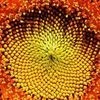
Cauvigny(Oise)FranceMitutoyo2.5x20mstep174img1vs3sec.thumb.png.7b145be2a2ab5cce3cf57a6a1b23ca7a.png)
Cauvigny(Oise)FranceMitutoyo2.5x25mstep142img1vs4sec.thumb.png.a345c4af97652cffce44f2b42bec7ac3.png)
Cauvigny(Oise)FranceMitutoyo2.5x25mstep112img1vs4sec.thumb.png.fae7ae4af9368de5ac34497d83a62691.png)
